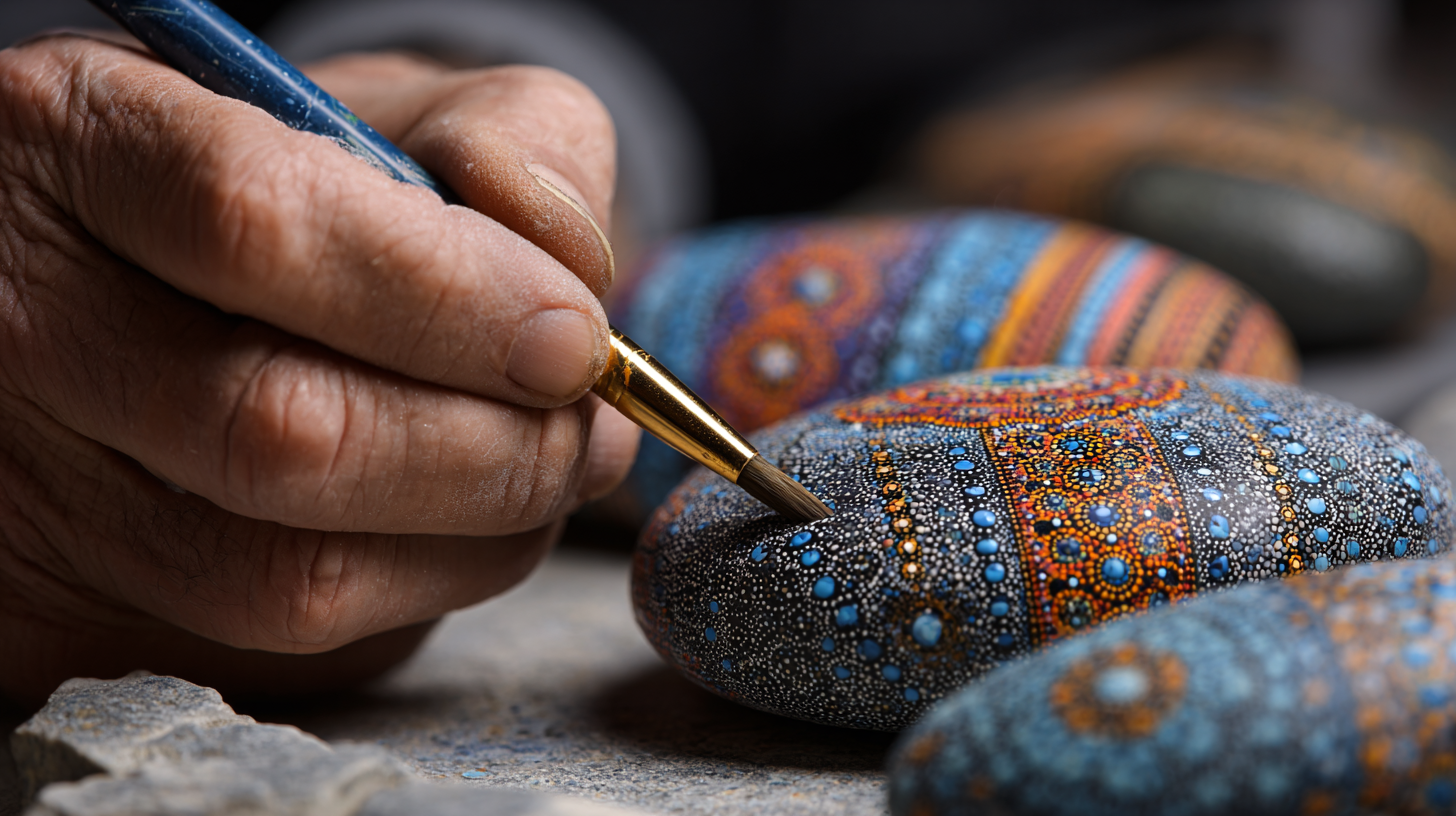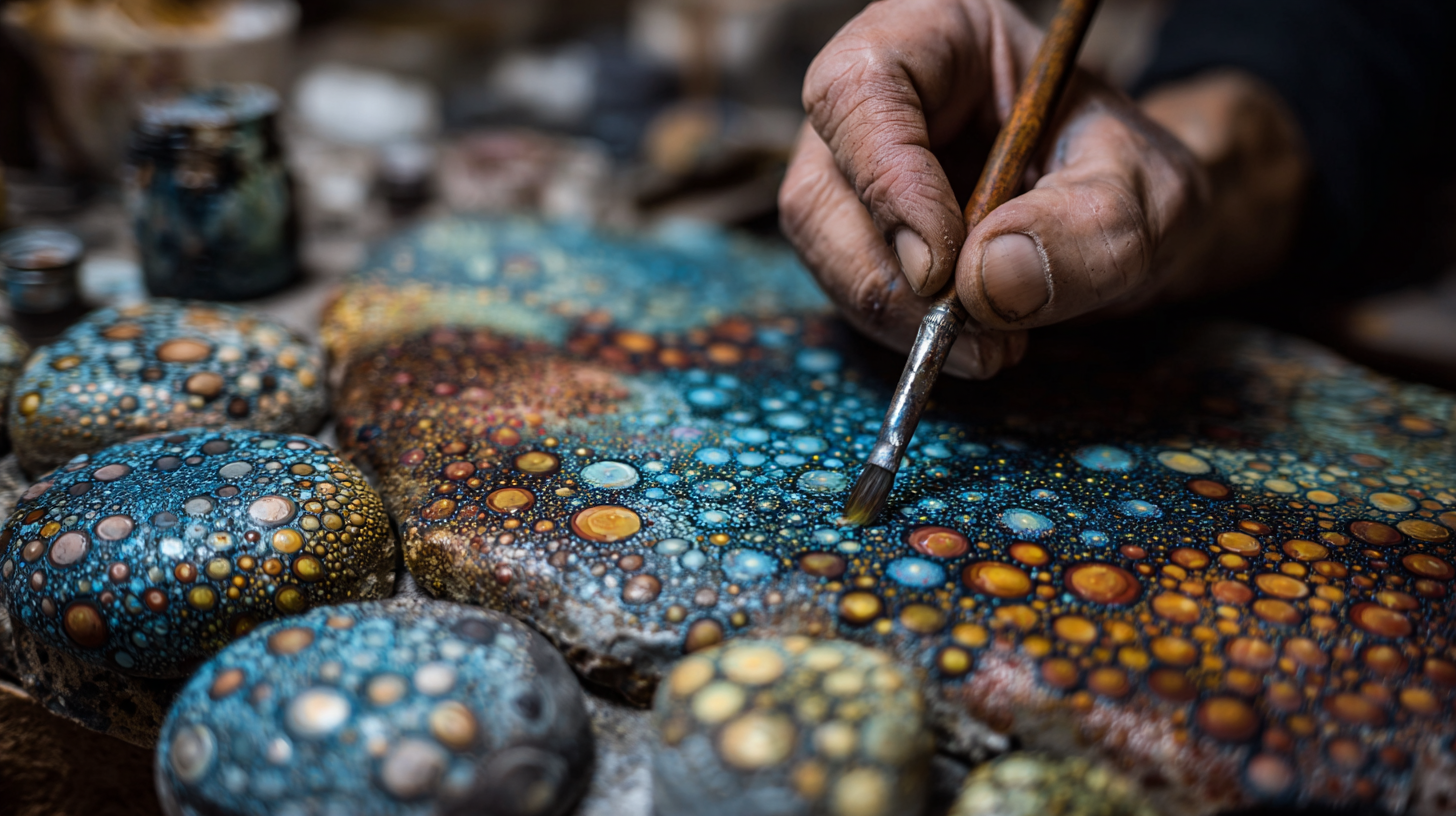In the world of creative expression, Stone Painting has emerged as a beloved medium for artists seeking a unique canvas that merges nature with artistry. However, as we delve deeper into the realm of artistic innovation, it's essential to explore alternatives that can expand our creative horizons. This blog will uncover innovative techniques and materials that challenge the conventional methods of Stone Painting, offering fresh perspectives on how to achieve stunning visual effects.

From utilizing mixed media and digital tools to incorporating unconventional surfaces and themes, we aim to inspire artists to think outside the stone and embrace a wider palette of possibilities. Join us on this artistic journey as we share practical tips and inventive ideas that can elevate your artistry beyond traditional Stone Painting, resulting in truly unique creations that capture the imagination.
When it comes to stone painting, the versatility of natural materials opens up a world of creative possibilities. Artists can explore various types of stones, from smooth pebbles to larger rocks, allowing for unique textures and surfaces for their artwork. Utilizing natural pigments like earth tones derived from minerals or plants enhances the authenticity of the pieces while maintaining eco-friendliness.
Tip: Experiment with different natural materials to find what best suits your artistic vision. For instance, try using clay or sand mixed with water to create your own natural paint. This not only adds texture but also makes your art more sustainable.
Additionally, stone painting can be enhanced by incorporating elements from nature, such as leaves, flowers, or even shells. These additions can provide a striking contrast against the stone’s surface, contributing to a more dynamic piece.
Tip: When selecting stones, consider their shape and size; larger stones can serve as dramatic canvases, while smaller stones might be perfect for intricate details. Always remember to clean your stones properly before painting to ensure the best adherence and longevity of your artwork.
Transforming ordinary stones into unique masterpieces requires a blend of creativity and technique. Start by choosing stones with interesting shapes or textures; look for pebbles, river stones, or even larger rocks to serve as your canvas. Once you have selected your stones, clean them thoroughly to remove any dirt or debris, allowing for better paint adhesion. This step is crucial for achieving vibrant colors and detailed designs.
 One innovative technique is to use acrylic pour painting on your stones. This method involves mixing acrylic paints with a pouring medium and allowing the colors to flow over the surface of the stone, creating stunning, abstract patterns. Remember to do this outside or in a well-ventilated area, as the pouring medium can have strong fumes. Allow the stones to dry completely before sealing them with a clear outdoor varnish to protect your art from the elements.
One innovative technique is to use acrylic pour painting on your stones. This method involves mixing acrylic paints with a pouring medium and allowing the colors to flow over the surface of the stone, creating stunning, abstract patterns. Remember to do this outside or in a well-ventilated area, as the pouring medium can have strong fumes. Allow the stones to dry completely before sealing them with a clear outdoor varnish to protect your art from the elements.
Another exciting approach is to incorporate natural elements like leaves, flowers, or sand into your artwork. You can apply these materials on a freshly painted stone or embed them into the surface using decoupage techniques. This not only enhances the visual appeal but also adds texture and depth to your creations. Experimenting with different combinations will lead to truly unique pieces that showcase your artistic flair.
In the world of stone painting, incorporating mixed media can dramatically enhance the visual appeal and uniqueness of your artwork. By integrating various materials such as fabric, beads, and acrylic paints, you can add depth and texture that traditional stone painting methods might lack. This approach not only diversifies your creativity but also allows for personal expression in each piece.
Tips for using mixed media in your stone artwork include starting with a clear design concept. Sketch out your ideas and think about how different materials can complement one another. For instance, combining soft fabrics with bold paint can create striking contrasts. Additionally, experiment with different adhesives to secure your materials; a hot glue gun works well for heavier items, while PVA glue is suitable for lighter elements.
Another tip is to layer your materials thoughtfully. Begin with a solid stone base, paint your primary design, and then strategically place mixed media embellishments on top. This layering technique not only adds intrigue but also invites viewers to appreciate the craftsmanship involved in your piece. Remember, the beauty of mixed media lies in its flexibility, so don’t hesitate to let your imagination run wild!
Color theory plays a pivotal role in stone painting, influencing not only the aesthetic appeal of artworks but also the emotional responses they evoke. Studies indicate that colors can affect mood and perception, with warm hues like red and orange often igniting feelings of excitement, while cooler shades like blue and green tend to promote calmness. According to a 2022 color psychology report, 75% of consumers make judgments about a product based on its color alone, underscoring the importance of strategic color selection in stone painting for achieving distinctive artistic expression.
When exploring innovative alternatives in stone painting, artists can leverage color theory to create unique visual narratives. For example, employing contrasting color combinations can enhance the visual interest of a stone artwork, drawing the viewer’s attention. Additionally, understanding color harmony—using analogous or triadic color schemes—can help artists establish a sense of balance within their pieces.
Tips: Experimenting with unexpected color pairings can yield surprising results. Try complementing earthy tones with vibrant colors to create a striking contrast. Additionally, consider the psychological effects of colors when choosing palettes; for instance, using softer pastels can convey serenity, perfect for calming garden stones. By skillfully applying color theory, artists can push the boundaries of traditional stone painting, creating pieces that resonate on a deeper emotional level.
Sustainable practices in stone art are gaining popularity as artists seek eco-friendly alternatives to traditional materials. Many creators are turning to natural pigments and biodegradable paints, which offer vibrant colors without harming the environment. For instance, using earth tones derived from clay and minerals not only enhances the visual appeal of stone artwork but also aligns with eco-conscious principles. These materials break down over time, ensuring that the artistry does not contribute to pollution or ecosystem harm.
Moreover, artists are increasingly opting for reclaimed stones and recycled materials to create unique pieces. This approach not only reduces waste but also adds character to the artwork. By sourcing stones from construction sites or using stones discarded from previous projects, artists can craft pieces that tell a story and support sustainability. Integrating natural elements like moss, wood, or metal into stone art can further enrich the aesthetic while promoting a connection to nature. Embracing these eco-friendly practices allows artists to innovate and express their creativity while being responsible stewards of the environment.

